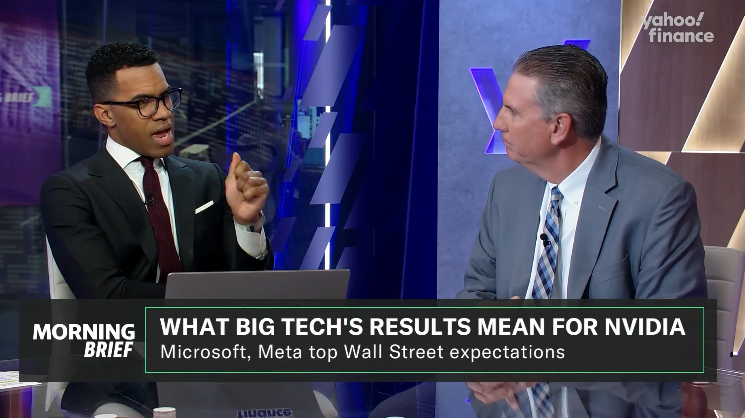
Consumer Spending Boosts Q3 GDP Above Expectations
Market Overview

Sources: Sources for data in tables: Equity Market and Fixed Income returns are from JP Morgan as of 11/01/19. Rates and Economic Calendar Data from Bloomberg as of 11/01/19. International developed markets measured by the MSCI EAFE Index, emerging markets measured by the MSCI EM Index. Sector performance is measured using GICS methodology.
Happening Now
Global equity markets had another strong week, as all major indexes finished higher last week. In the U.S., the S&P 500 Index propelled to a level of 3,067, representing a gain of 1.49%, while the Russell Midcap Index gained 1.18% for the week. The Russell 2000 Index, a measure of the Nation’s smallest publically traded firms, returned 1.99% over the week. On the international equities front, developed markets increased by 1.19%, while emerging markets rose 1.30%. Finally, the 10-year U.S. Treasury yield finished the week at 1.73%.
In the U.S., equities enjoyed another week of strong performance thanks in large part to better than expected 3rd quarter Gross Domestic Product (GDP) figures. The United States economy grew at an annualized rate of 1.9% in the 3rd quarter of 2019, well above the 1.6% rate that forecasters expected. The majority of this growth can be attributed to the strength of the American consumer. In fact, consumer spending grew by about 2% throughout the quarter. Government spending and residential fixed investment were both positive contributors, whereas business investment and net exports detracted from Q3 GDP growth.
Favorable economic growth wasn’t the only thing pushing stock markets higher last week. On Wednesday, the Chairman of the Federal Reserve (Fed), Jerome Powell, announced that the Fed would, once again, loosen monetary policy by reducing the Federal Funds Target Rate by another 0.25%. This move places the Fed Funds Target Rate in a range of 1.50% to 1.75%. We’ve argued extensively against continual reductions in the Fed Funds rate, and it appears we may finally get our way based on Chairman Powell’s comments last Wednesday. Updated language in the Chairman’s press conference verbiage indicates that additional rate cuts will be placed on the back burner, only to restart should the economy begin to show repeated signs of deterioration.
These economic results support our belief that the U.S. consumer is resilient and remains optimistic, while also underpinning our “Slowing but Growing” theme for 2019. With that said, we recognize that during such periods volatility is likely to persist which is why we continue to encourage investors to stay disciplined and work with experienced financial professionals to help manage their portfolios through various market cycles within an appropriately diversified framework that is consistent with their objectives, timeframe, and tolerance for risk.
Important Information and Disclaimers
Disclosures: Hennion & Walsh is the sponsor of SmartTrust® Unit Investment Trusts (UITs). For more information on SmartTrust® UITs, please visit www.smarttrustuit.com. The overview above is for informational purposes and is not an offer to sell or a solicitation of an offer to buy any SmartTrust® UITs. Investors should consider the Trust’s investment objective, risks, charges and expenses carefully before investing. The prospectus contains this and other information relevant to an investment in the Trust and investors should read the prospectus carefully before they invest.
Investing in foreign securities presents certain risks not associated with domestic investments, such as currency fluctuation, political and economic instability, and different accounting standards. This may result in greater share price volatility. These risks are heightened in emerging markets.
There are special risks associated with an investment in real estate, including credit risk, interest rate fluctuations and the impact of varied economic conditions. Distributions from REIT investments are taxed at the owner’s tax bracket.
The prices of small company and mid cap stocks are generally more volatile than large company stocks. They often involve higher risks because smaller companies may lack the management expertise, financial resources, product diversification and competitive strengths to endure adverse economic conditions.
Investing in commodities is not suitable for all investors. Exposure to the commodities markets may subject an investment to greater share price volatility than an investment in traditional equity or debt securities. Investments in commodities may be affected by changes in overall market movements, commodity index volatility, changes in interest rates or factors affecting a particular industry or commodity.
Products that invest in commodities may employ more complex strategies which may expose investors to additional risks.
Investing in fixed income securities involves certain risks such as market risk if sold prior to maturity and credit risk especially if investing in high yield bonds, which have lower ratings and are subject to greater volatility. All fixed income investments may be worth less than original cost upon redemption or maturity. Bond Prices fluctuate inversely to changes in interest rates. Therefore, a general rise in interest rates can result in the decline of the value of your investment.
Definitions
MSCI- EAFE: The Morgan Stanley Capital International Europe, Australasia and Far East Index, a free float-adjusted market capitalization index that is designed to measure developed-market equity performance, excluding the United States and Canada.
MSCI-Emerging Markets: The Morgan Stanley Capital International Emerging Market Index, is a free float-adjusted market capitalization index that is designed to measure the performance of global emerging markets of about 25 emerging economies.
Russell 3000: The Russell 3000 measures the performance of the 3000 largest US companies based on total market capitalization and represents about 98% of the investible US Equity market.
ML BOFA US Corp Mstr [Merill Lynch US Corporate Master]: The Merrill Lynch Corporate Master Market Index is a statistical composite tracking the performance of the entire US corporate bond market over time.
ML Muni Master [Merill Lynch US Corporate Master]: The Merrill Lynch Municipal Bond Master Index is a broad measure of the municipal fixed income market.
Investors cannot directly purchase any index.
LIBOR, London Interbank Offered Rate, is the rate of interest at which banks offer to lend money to one another in the wholesale money markets in London.
The Dow Jones Industrial Average is an unweighted index of 30 “blue-chip” industrial U.S. stocks.
The S&P Midcap 400 Index is a capitalization-weighted index measuring the performance of the mid-range sector of the U.S. stock market, and represents approximately 7% of the total market value of U.S. equities. Companies in the Index fall between S&P 500 Index and the S&P SmallCap 600 Index in size: between $1-4 billion.
DJ Equity REIT Index represents all publicly traded real estate investment trusts in the Dow Jones U.S. stock universe classified as Equity REITs according to the S&P Dow Jones Indices REIT Industry Classification Hierarchy. These companies are REITs that primarily own and operate income-producing real estate.



